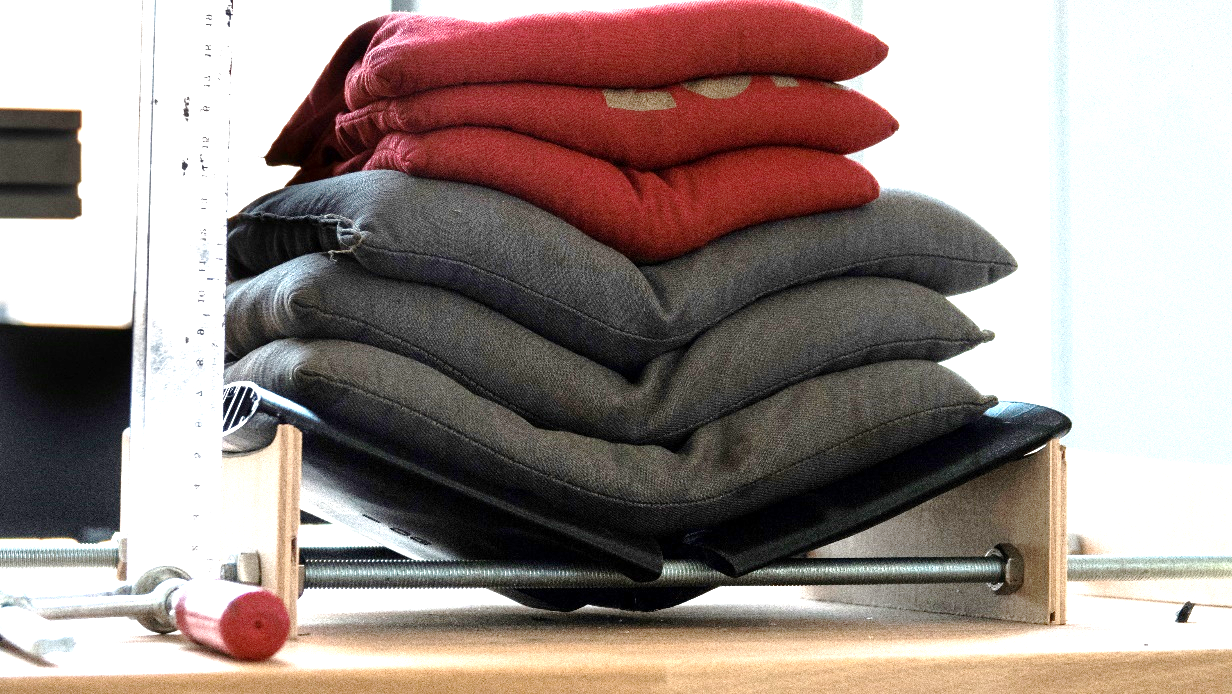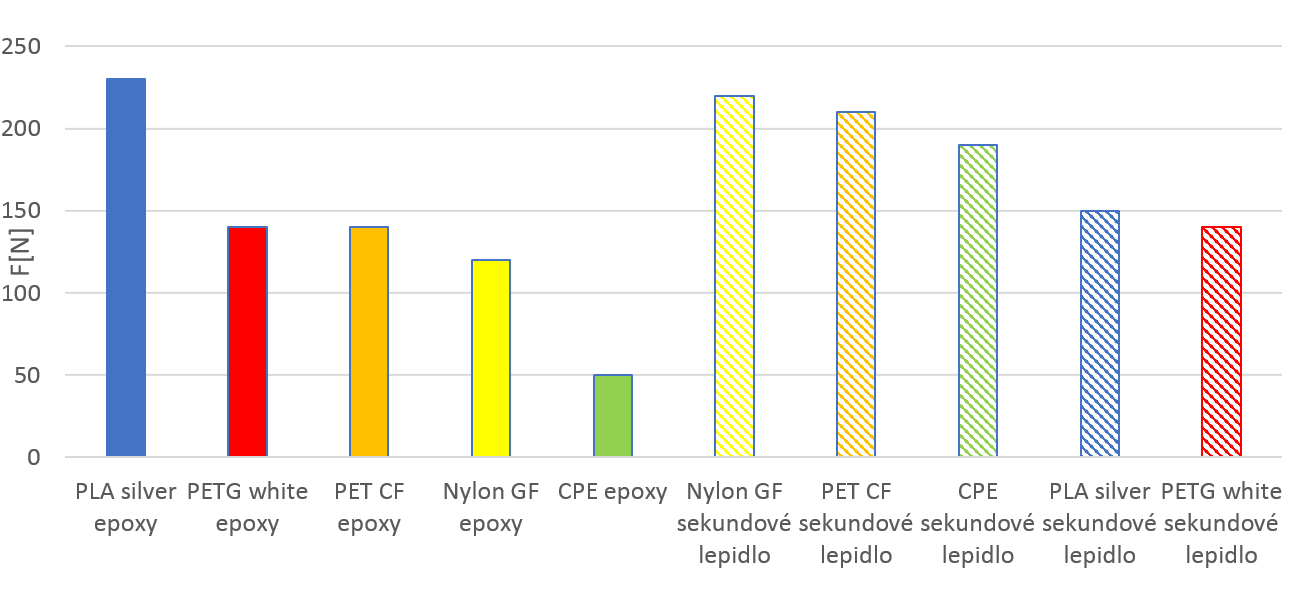This project is based on collaboration between 3DLabprint founder Štěpán Dokoupil and Institute of Aerospace Engineering (Brno University of Technology). Object of this study was to use conventional testing methods (tensile test) to determine mechanical properties of 3D printed materials and check results with test on part of airframe.
Tensile test
Tensile test was performed according to EN ISO 527 slightly modified standard for plastics.

Fig.1: Tensile test setup
For better simulation of mechanical properties of aeroplane parts (printed in standing direction) two types of printing direction were used. First type were specimens laying flat on the build surface to test mainly mechanical properties of material itself. Second type where specimens printed in standing direction (like the planes), to properly analyze influence of layer adhesion on mechanical properties of printed parts. Results of this tests are compared in figures below.

Fig. 2: Tensile strenght (in MPa)

Fig.3: Youngs modulus (in MPa)
It is obvious that material PLA is the best material in terms of tensile strength, more importantly in case of printing aeroplanes, inter layer strength. So far as tensile modulus is concerned, PLA remains the best choice for printing aeroplanes in terms of toughness.
Test on real part
To verify reliability of tensile testing method for analyzing strength 3D printed aeroplanes we decided to test part of 3D printed aeroplane. Wing root parts of the

Fig.4: Breaking force
Zivko Edge HA were chosen as a representative structure. Test was designed as an simply supported wing root structure loaded with uniformly distributed load.

Fig. 5: Wing test experimental setup
In this test Nylforce Glass performed the best strength. PLA was considered as second best performer. Despite its superior strength Nylforce Glass showed problems with bed adhesion and more importantly is problematical to glue with conventional glues as shown in figure below.
Fig. 6: Breaking force of glued specimens
This fact leads to conclusion, that PLA remains as better suited material for aeroplane print.
Conclusion
Result of this research proves that the PLA material remains best choice for printing of aeroplanes, but this fact is no surprise and is not so important as relation between the results of two methods used for testing. In fact there was almost no correlation between tensile test and bending test besides the winning material PLA . This might reveal the that tensile test according to the EN ISO 527 standard is not suitable for analysing strength of thin walled prints such as aeroplanes. It could show new direction in the research to develop better testing method which would better simulate type of loading (in this case bending test) and behavior of thinwalled structure (should have minimal infill and definitly bigger surface) and should be printed in standing direction. This includes also the technological influence on strength of the specimen because bigger area allows for better cooling of the print for the filament to better fuse together thus for much stronger prints.
Second important revelation is to judge the material in terms of intralayer strength characteristic for printing direction of aeroplane parts .
Next important fact is that glue buttjoints remains the weak point of the construction. Therefore modification of them is important to allow for correct lapjoint (conector) configuration. This concept will be deployed in future 3Dlabprint designs because of better load to strength ratio.

Fig. 7: Improved wing conection (source: Eclipson airplanes)
As a wrap up you can enjoy some slowmotion shots of experiments.










Log In to reply
Log In to reply
Log In to reply